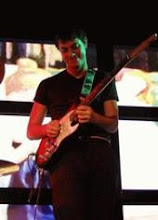This post talks about a cool feature I needed and found a way to solve.
I wanted a way to cross fade between effects and didn't want to use sends.
I decided to go with racks , since I've already seen cool demos of switching between effects using chains, I decided to try and crossfade between them.
First of all, let's put a nice pad on the floor playing a I-IV progression. I chose Operator->Synth->Pad->5th Pad and put a 2 bar loop of a C note and an F note:

Now let's drag an Auto Filter after the whole operator chain mess and group it (right click the auto filter bar and press group):

Rename the first chain to "Pulsing" and add another two chains - "Down Step" and "Clean". Drag another auto-Filter into the "Down Step" chain:

What we have now are three different channels to choose from - two effects and one clean one.
Now press solo on the first chain ("pulsing") and create a nice pulsating sound using the frequency settings of the autofilter:

Now solo the second chain ("down step") and create another linear frequency effect. I put the filter on Hi Pass mode with an initial filter of 4.8khz and a Q of 2.26 for a cool resonance effect.

and put on a nice envelope for a down step feeling:

So now we have 3 channels in one, A nice pulsating effect, A cool down step and a clean channel. Let's create three 64 bar,unlinked envelopes on the mixers of each chain: start with a clean effect, move on to the pulsing and finish it off with the down step. Remeber to unsolo the chains and unlink the envelopes:



Now sit back,press play and let the next two minutes sweep over you :)
Wanna contribute a cool tip?
email me : fireballgames AT hotmail DOT com
Feel like being a good sport?
Add me as a friend on myspace!
Cheers
J
 I have an old Fatar midi keyboard I never use so I decided to take the plunge. I took it apart and found out how to cause MIDI events
I have an old Fatar midi keyboard I never use so I decided to take the plunge. I took it apart and found out how to cause MIDI events
 After a million hours of connecting wires and checking that everything works it was time to build the chassis.
After a million hours of connecting wires and checking that everything works it was time to build the chassis.
 Next we put the buttons in
Next we put the buttons in

 And here is the completed project (more pictures and videos coming soon):
And here is the completed project (more pictures and videos coming soon):










